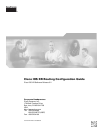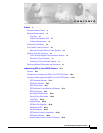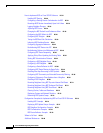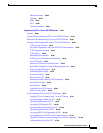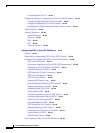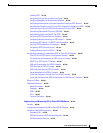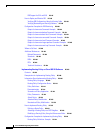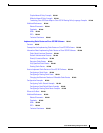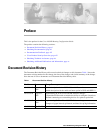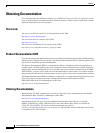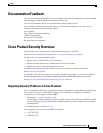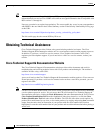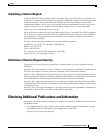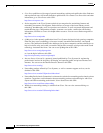
Contents
RC-iv
Cisco IOS XR Routing Configuration Guide
How to Implement BGP on Cisco IOS XR Software RC-27
Enabling BGP Routing RC-28
Configuring a Routing Domain Confederation for BGP RC-31
Resetting eBGP Session Immediately Upon Link Failure RC-33
Logging Neighbor Changes RC-34
Adjusting BGP Timers RC-34
Changing the BGP Default Local Preference Value RC-35
Configuring the MED Metric for BGP RC-36
Configuring BGP Weights RC-38
Tuning the BGP Best Path Calculation RC-39
Indicating BGP Backdoor Routes RC-41
Configuring Aggregate Addresses RC-43
Redistributing iBGP Routes into IGP RC-44
Redistributing Prefixes into Multiprotocol BGP RC-46
Configuring BGP Route Dampening RC-48
Applying Policy When Updating the Routing Table RC-52
Setting BGP Administrative Distance RC-53
Configuring a BGP Neighbor Group RC-55
Configuring a BGP Neighbor RC-58
Configuring a Route Reflector for BGP RC-60
Configuring BGP Route Filtering by Route Policy RC-62
Disabling Next Hop Processing on BGP Updates RC-64
Configuring BGP Community and Extended-Community Filtering RC-65
Configuring Software to Store Updates from a Neighbor RC-67
Disabling a BGP Neighbor RC-69
Resetting Neighbors Using BGP Dynamic Inbound Soft Reset RC-71
Resetting Neighbors Using BGP Outbound Soft Reset RC-71
Resetting Neighbors Using BGP Hard Reset RC-72
Clearing Caches, Tables and Databases RC-73
Displaying System and Network Statistics RC-73
Monitoring BGP Update Groups RC-75
Configuration Examples for Implementing BGP on Cisco IOS XR Software RC-76
Enabling BGP: Example RC-76
Displaying BGP Update Groups: Example RC-77
BGP Neighbor Configuration: Example RC-78
BGP Confederation: Example RC-78
BGP Route Reflector: Example RC-79
Where to Go Next RC-79
Additional References RC-80



